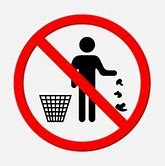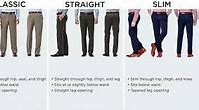Cartoon Cat Adalah Bahasa Indonesia

Cartoon Network ialah rangkaian televisyen kabel dimiliki oleh pembahagian Global Kids, Young Adults and Classics dari Warner Bros. Entertainment, yang juga ialah anak syarikat Warner Bros. Discovery melalui pembahagian Studio dan Kumpulan Rangkaian.
Saluran ini dilancarkan pada 1 Oktober 1992, dan kebanyakannya menyiarkan rancangan televisyen animasi dan kartun, terutamanya rancangan kanak-kanak, terdiri daripada komedi animasi dan aksi. Ia kini beroperasi pada jam 6 pagi to 9 malam (ET/PT) dan disasarkan kepada kanak-kanak antara 6 hingga 13 tahun.[1] Blok siaran separuh harinya, Adult Swim disasarkan kepada golongan dewasa dan dijadikan sebagai entiti berasingan untuk tujuan promosi dan sebagai saluran berasingan oleh Nielsen untuk tujuan penarafan.[2]
Sehingga November 2020, Cartoon Network terdapat sekurang-kurangnya 85 juta isi rumah yang melanggan perkhidmatan televisyen kabel di Amerika Syarikat.[3]
Ia memulakan siarannya dengan tujuan memberi perhatian bagi pemirsa kanak-kanak pada tanggal 1 Oktober 1992 dan pengaturcaraan awal pada saluran terdiri eksklusif dari tayangan ulang kartun Warner Bros. yang klasik, kartun Popeye 1933-1957, kartun MGM dan sebahagian besar dari Hanna-Barbera.
Sejak dilancarkan, saluran ini bersiaran 24 jam per hari, 7 hari per minggu.
Pada tahun 1993, ia memperoleh rancangan aslinya, The Moxy Show. Untuk melakukannya, studionya sendiri (sekali lagi, dibuat oleh Hanna-Barbera), ditubuhkan pada tahun 1994 dengan program yang disebut The What-A-Cartoon! Show. Ia juga bekembang dan studionya itu dinamakan oleh Cartoon Network Studios.
Pengambilalihan Turner oleh Time Warner, yang terjadi pada tahun 1996[4], memperoleh pemilikan konsolidasi semua kartun Warner Bros., yakni kartun pasca-Julai 1948 dan kartun hitam-putih (yang telah dibeli kembali Warner Brothers pada tahun 1960).[5]
Sebahagian besar kartun pendek yang ditayangkan dalam bentuk pakej setengah jam-jam atau panjang, biasanya dipisahkan dengan aksara atau studio itu dibuat. Sebahagian besar animasi klasik yang dipaparkan di Cartoon Network tidak lagi mengudara, dengan pengecualian beberapa atau sebahagian besar kartun Looney Tunes atau kartun MGM. Diantaranya ialah Tom and Jerry.
Rancangan dari CN tidak akan terdapat di Kanada sampai dengan tahun 1997, ketika sebuah rangkaian khusus Kanada Télétoon (dan pasangan bahasa Bahasa Perancis-nya) dilancarkan.
Pada tarikh 14 Jun 2004, Cartoon Network seterusnya dikemaskini logo, dan slogan: “This is Cartoon Network!”. Ini ialah era pertama CN dengan pengumuman m,enggunakan suara wanita untuk rangkaian. Ditambah lagi dengan bumper baru berisi karakter kartun 2D di kota (model CGI).
Tahun berikutnya, 2005, dikenali sebagai masa keemasan untuk Cartoon Network, mempunyai sebanyak 20 menunjukkan baru dengan episod baru untuk setiap satu, sekaligus. Rangkaian ini juga sangat dipromosikan pada tahun 2005 dengan iklan baru setiap hari. Kemudian, rangkaian memuat menunjukkan lebih dari 1990-an.
Pada tarikh 10 April 2006, cogan Cartoon Network menggunakan cogan baru - “Cartoon Network — Yes!,” sebagaimana diucapkan oleh Fred Fredburger. Rangkaian ini juga menggunakan apa yang menampilkan tokoh Camp Lazlo. Pada tarikh 1 September 2007, paparan rangkaian ini dirubah, dan bumper dan pengenalan stesen yang bertema untuk lagu dari The Hives, "Fall is Just Something That Grown-Ups Invented". Sebulan kemudian, pada tarikh 15 Oktober, saluran tersebut bermula bersiaran dalam definisi tinggi 1080i.
Sejak bulan April 2008, Cartoon Network mula menayangkan pada bumper satu pemberitahuan penutupan jam tayang, menggambarkan kegiatan sehari-hari seorang anak dari matahari terbit hingga malam hari, dan ditutup dengan "Good Night. See you tomorrow!" sebelum blok rancangan Adult Swim. Ini ialah bumper pertama mereka untuk penutupan jam tayangnya selepas 7 tahun menayangkan seperti blok malam.
Pada tarikh 22 Mac 2010, Cartoon Network memulakan debut barunya: logo ketiga, yang merupakan ciri di dalam 2010 muka rangkaian dan tur yang bertema dalam nama "Move It Movement". Ia memulakan debut televisyennya pada tarikh 29 Mei 2010 06:00. Tampilan baru juga merangkumi akting cemerlang dari logo Cartoon Network 1992-2004 di beberapa ident dengan jenis huruf berbeda. Selain itu, bumper penutupannya kemudian disemak untuk menyesuaikan tampilan baru rangkaian ini. Sekarang hanya memaparkan persegi mengatakan "10:00", diikuti oleh kata "Check Ya Later" dan logo baru Cartoon Network. Bumper baru yang diperkenalkan ialah bumper sign-on.
Sebuah audio berbahasa Sepanyol boleh diakses melalui SAP, beberapa syarikat kabel memberikan pakan Sepanyol sebagai saluran berasingan.
Rancangan kanak-kanak pra-TK dibuat bergantung pada studio, seperti:
Ada puluhan kartun berformat aksi, misalnya:
Siri komedi dibawah ini diterbitkan oleh Warner Bros. Animation
Siri lain yang ditayangkan di Cartoon Network ialah:
Boomerang ialah saluran kembar Cartoon Network yang menayangkan pelbagai rancangan klasik. Ia ditargetkan bagi kanak-kanak dengan tujuan mengenang kejayaan kartun pada masa lalu.
Type of two-dimensional visual art
A cartoon is a type of visual art that is typically drawn, frequently animated, in an unrealistic or semi-realistic style. The specific meaning has evolved, but the modern usage usually refers to either: an image or series of images intended for satire, caricature, or humor; or a motion picture that relies on a sequence of illustrations for its animation. Someone who creates cartoons in the first sense is called a cartoonist,[1] and in the second sense they are usually called an animator.
The concept originated in the Middle Ages, and first described a preparatory drawing for a piece of art, such as a painting, fresco, tapestry, or stained glass window. In the 19th century, beginning in Punch magazine in 1843, cartoon came to refer – ironically at first – to humorous artworks in magazines and newspapers. Then it also was used for political cartoons and comic strips. When the medium developed, in the early 20th century, it began to refer to animated films that resembled print cartoons.[2]
A cartoon (from Italian: cartone and Dutch: karton—words describing strong, heavy paper or pasteboard and cognates for carton) is a full-size drawing made on sturdy paper as a design or modello for a painting, stained glass, or tapestry. Cartoons were typically used in the production of frescoes, to accurately link the component parts of the composition when painted on damp plaster over a series of days (giornate). In media such as stained tapestry or stained glass, the cartoon was handed over by the artist to the skilled craftsmen who produced the final work.
Such cartoons often have pinpricks along the outlines of the design so that a bag of soot patted or "pounced" over a cartoon, held against the wall, would leave black dots on the plaster ("pouncing"). Cartoons by painters, such as the Raphael Cartoons in London, Francisco Goya's tapestry cartoons, and examples by Leonardo da Vinci, are highly prized in their own right. Tapestry cartoons, usually colored, could be placed behind the loom, where the weaver would replicate the design. As tapestries are worked from behind, a mirror could be placed behind the loom to allow the weaver to see their work; in such cases the cartoon was placed behind the weaver.[2]
In print media, a cartoon is a drawing or series of drawings, usually humorous in intent. This usage dates from 1843, when Punch magazine applied the term to satirical drawings in its pages,[5] particularly sketches by John Leech. The first of these parodied the preparatory cartoons for grand historical frescoes in the then-new Palace of Westminster in London.[7]
Sir John Tenniel—illustrator of Alice's Adventures in Wonderland—joined Punch in 1850, and over 50 years contributed over two thousand cartoons.[8]
Cartoons can be divided into gag cartoons, which include editorial cartoons, and comic strips.
Modern single-panel gag cartoons, found in magazines, generally consist of a single drawing with a typeset caption positioned beneath, or, less often, a speech balloon. Newspaper syndicates have also distributed single-panel gag cartoons by Mel Calman, Bill Holman, Gary Larson, George Lichty, Fred Neher and others. Many consider New Yorker cartoonist Peter Arno the father of the modern gag cartoon (as did Arno himself).[10] The roster of magazine gag cartoonists includes Charles Addams, Charles Barsotti, and Chon Day.
Bill Hoest, Jerry Marcus, and Virgil Partch began as magazine gag cartoonists and moved to syndicated comic strips. Richard Thompson illustrated numerous feature articles in The Washington Post before creating his Cul de Sac comic strip. The sports section of newspapers usually featured cartoons, sometimes including syndicated features such as Chester "Chet" Brown's All in Sport.
Editorial cartoons are found almost exclusively in news publications and news websites. Although they also employ humor, they are more serious in tone, commonly using irony or satire. The art usually acts as a visual metaphor to illustrate a point of view on current social or political topics. Editorial cartoons often include speech balloons and sometimes use multiple panels. Editorial cartoonists of note include Herblock, David Low, Jeff MacNelly, Mike Peters, and Gerald Scarfe.[2]
Comic strips, also known as cartoon strips in the United Kingdom, are found daily in newspapers worldwide, and are usually a short series of cartoon illustrations in sequence. In the United States, they are not commonly called "cartoons" themselves, but rather "comics" or "funnies". Nonetheless, the creators of comic strips—as well as comic books and graphic novels—are usually referred to as "cartoonists". Although humor is the most prevalent subject matter, adventure and drama are also represented in this medium. Some noteworthy cartoonists of humorous comic strips are Scott Adams, Charles Schulz, E. C. Segar, Mort Walker and Bill Watterson.[2]
Political cartoons are like illustrated editorials that serve visual commentaries on political events. They offer subtle criticism which are cleverly quoted with humour and satire to the extent that the criticized does not get embittered.
The pictorial satire of William Hogarth is regarded as a precursor to the development of political cartoons in 18th century England. George Townshend produced some of the first overtly political cartoons and caricatures in the 1750s.[12] The medium began to develop in the latter part of the 18th century under the direction of its great exponents, James Gillray and Thomas Rowlandson, both from London. Gillray explored the use of the medium for lampooning and caricature, and has been referred to as the father of the political cartoon. By calling the king, prime ministers and generals to account for their behaviour, many of Gillray's satires were directed against George III, depicting him as a pretentious buffoon, while the bulk of his work was dedicated to ridiculing the ambitions of revolutionary France and Napoleon. George Cruikshank became the leading cartoonist in the period following Gillray, from 1815 until the 1840s. His career was renowned for his social caricatures of English life for popular publications.
By the mid 19th century, major political newspapers in many other countries featured cartoons commenting on the politics of the day. Thomas Nast, in New York City, showed how realistic German drawing techniques could redefine American cartooning. His 160 cartoons relentlessly pursued the criminal characteristic of the Tweed machine in New York City, and helped bring it down. Indeed, Tweed was arrested in Spain when police identified him from Nast's cartoons. In Britain, Sir John Tenniel was the toast of London. In France under the July Monarchy, Honoré Daumier took up the new genre of political and social caricature, most famously lampooning the rotund King Louis Philippe.
Political cartoons can be humorous or satirical, sometimes with piercing effect. The target of the humor may complain, but can seldom fight back. Lawsuits have been very rare; the first successful lawsuit against a cartoonist in over a century in Britain came in 1921, when J. H. Thomas, the leader of the National Union of Railwaymen (NUR), initiated libel proceedings against the magazine of the British Communist Party. Thomas claimed defamation in the form of cartoons and words depicting the events of "Black Friday", when he allegedly betrayed the locked-out Miners' Federation. To Thomas, the framing of his image by the far left threatened to grievously degrade his character in the popular imagination. Soviet-inspired communism was a new element in European politics, and cartoonists unrestrained by tradition tested the boundaries of libel law. Thomas won the lawsuit and restored his reputation.[17]
Cartoons such as xkcd have also found their place in the world of science, mathematics, and technology. For example, the cartoon Wonderlab looked at daily life in the chemistry lab. In the U.S., one well-known cartoonist for these fields is Sidney Harris. Many of Gary Larson's cartoons have a scientific flavor.
The first comic-strip cartoons were of a humorous tone.[18] Notable early humor comics include the Swiss comic-strip book Mr. Vieux Bois (1837), the British strip Ally Sloper (first appearing in 1867) and the American strip Yellow Kid (first appearing in 1895).
In the United States in the 1930s, books with cartoons were magazine-format "American comic books" with original material, or occasionally reprints of newspaper comic strips.[19]
In Britain in the 1930s, adventure comic magazines became quite popular, especially those published by DC Thomson; the publisher sent observers around the country to talk to boys and learn what they wanted to read about. The story line in magazines, comic books and cinema that most appealed to boys was the glamorous heroism of British soldiers fighting wars that were exciting and just.[20] DC Thomson issued the first The Dandy Comic in December 1937. It had a revolutionary design that broke away from the usual children's comics that were published broadsheet in size and not very colourful. Thomson capitalized on its success with a similar product The Beano in 1938.[21]
On some occasions, new gag cartoons have been created for book publication.
Because of the stylistic similarities between comic strips and early animated films, cartoon came to refer to animation, and the word cartoon is currently used in reference to both animated cartoons and gag cartoons. While animation designates any style of illustrated images seen in rapid succession to give the impression of movement, the word "cartoon" is most often used as a descriptor for television programs and short films aimed at children, possibly featuring anthropomorphized animals, superheroes, the adventures of child protagonists or related themes.
In the 1980s, cartoon was shortened to toon, referring to characters in animated productions. This term was popularized in 1988 by the combined live-action/animated film Who Framed Roger Rabbit, followed in 1990 by the animated TV series Tiny Toon Adventures.
Wikimedia Commons has media related to
in Wiktionary, the free dictionary.



